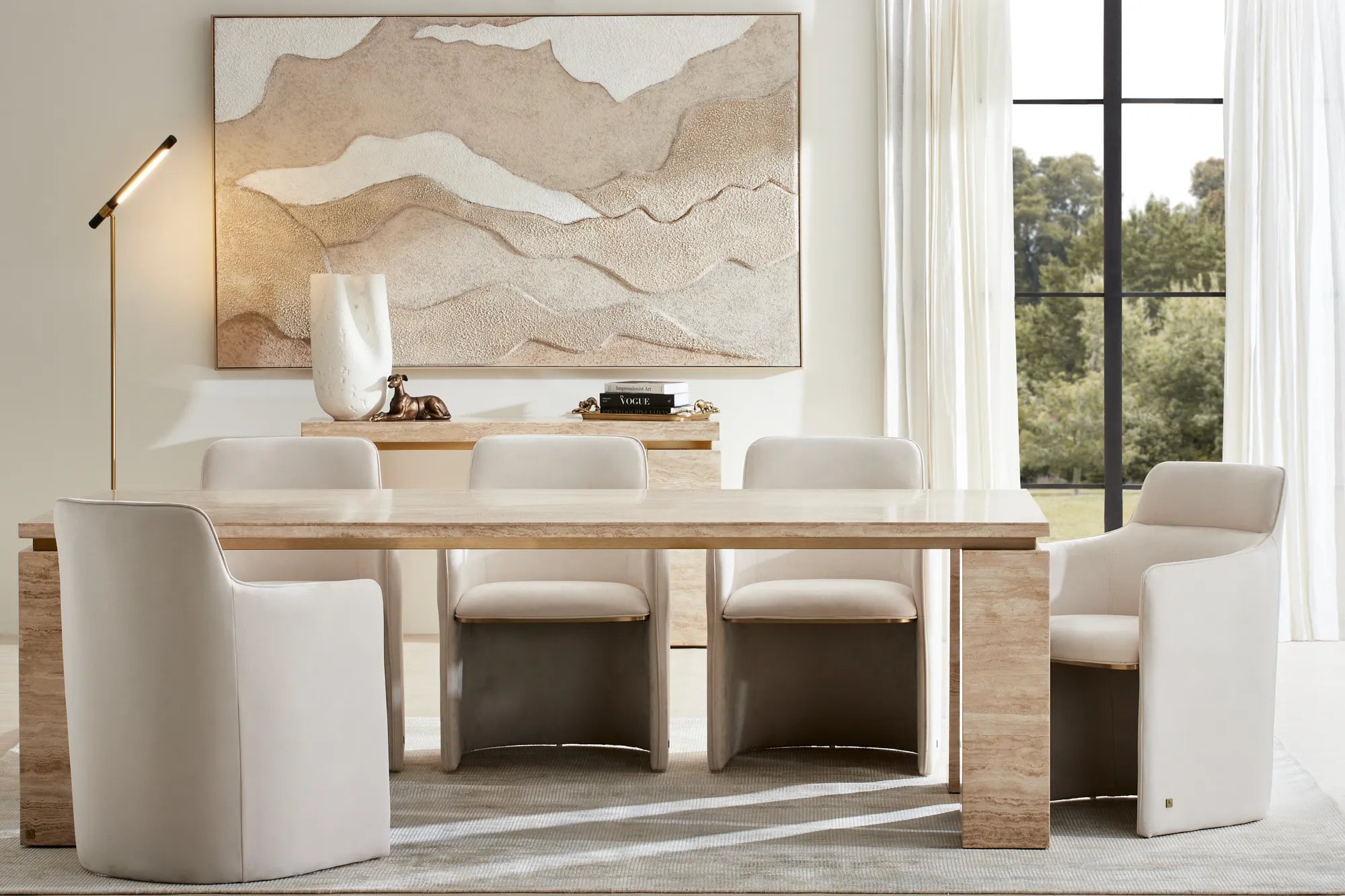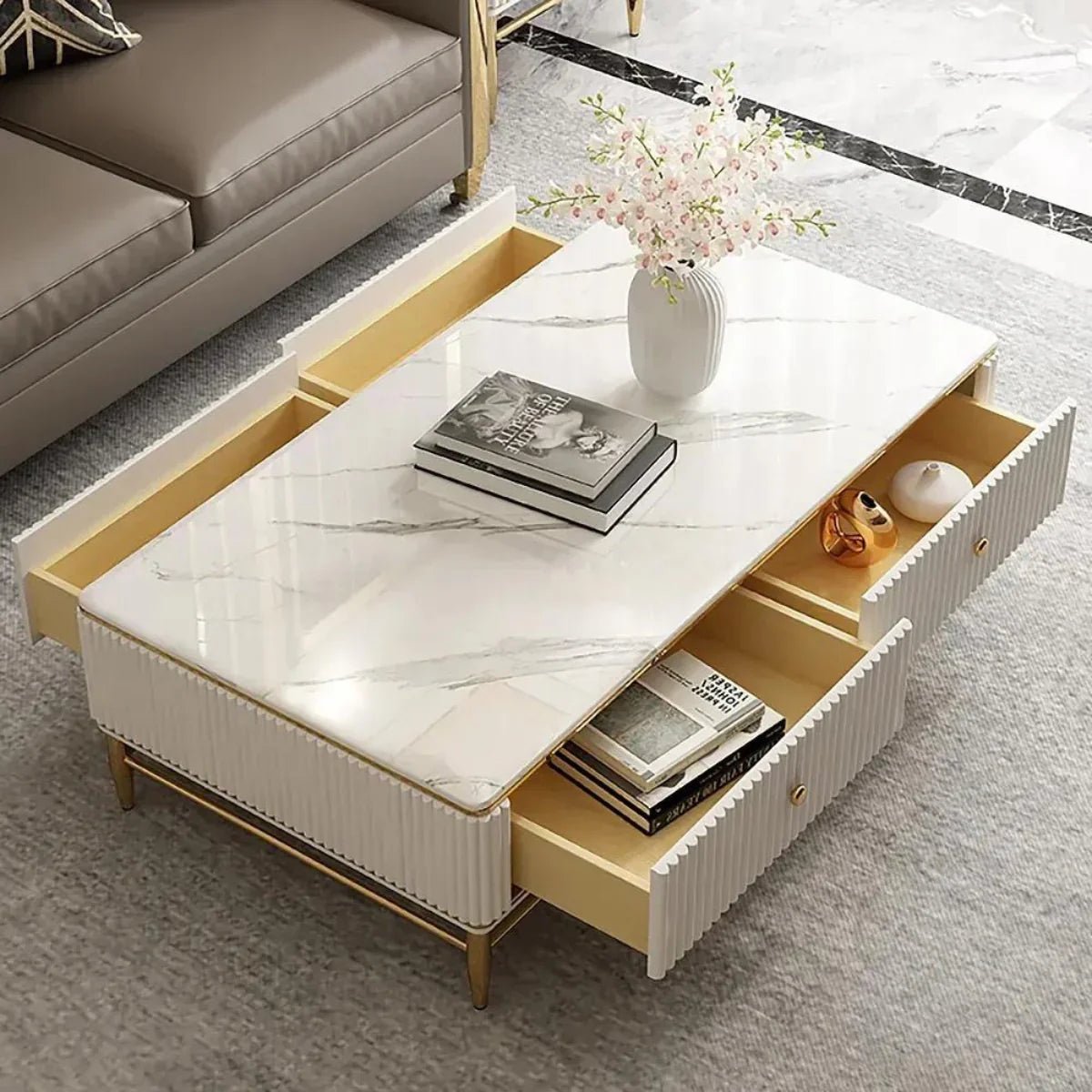Much like Caprani lamps, travertine tables are becoming the latest must-have feature in stylish interiors. They are quickly gaining popularity in homes featured everywhere, from the pages of Architectural Digest to personal Pinterest boards of design enthusiasts – not to mention in the inventories of top-tier vintage furniture dealers on Instagram.
Similar to that elusive marble coffee table you’ve dreamed of adding to your living space for years, these natural stone pieces offer an elegant, timeless appeal. They bring a refined sense of grandeur to any room, while also serving as the perfect neutral backdrop for showcasing bold, colourful vases or stacks of your most treasured books. If you’ve been considering adding a travertine table to your collection, you’ve come to the right place. But before diving in, let’s explore the basics…

What is Travertine, Exactly?
Travertine is a natural stone, often likened to nature’s concrete. Formed through the rapid deposition of carbonate minerals from natural springs, this stone is typically found in areas with geothermal activity. It’s sometimes called travertine limestone or travertine marble, but despite being a type of limestone, it’s technically not classified as marble.
This stone has a rich history – the Romans used it in the construction of the iconic Colosseum, and it continued to be popular in the 20th century with buildings like the Getty Center in Los Angeles and Berlin’s Shell-Haus both showcasing imported Italian travertine.
While it was traditionally used for facades, flooring, and wall cladding, travertine made a major leap into furniture-making during the mid-20th century. Today, thanks to our ongoing fascination with vintage interior design, travertine has experienced a resurgence, particularly in the form of striking, statement-making tables.

Why Do Travertine Tables Make Such an Impact?
Travertine tables add immediate texture and depth to a room. With its unique surface and neutral tone, it becomes an unexpected, yet incredibly versatile piece in any setting. Beyond the aesthetic appeal, the sheer weight of a travertine table brings an air of solidity and purpose to your décor. If we were to interpret a person’s choice of travertine in terms of character, we’d say that the heft of this stone speaks to a person who is confident, serious, and grounded, while its natural beauty and earthy hues reflect a more soulful and emotionally aware side.
Where to Buy Your Own Travertine Table
If you’re looking for a genuine 20th-century travertine antique, be prepared to spend a considerable amount – authentic pieces can fetch prices in the five-figure range, with a selection often available on sites like 1stdibs. Additionally, many local vintage furniture sellers, especially those active on Instagram, offer a range of travertine options.
For those with a smaller budget or limited space, you don’t have to miss out. Consider smaller items like travertine bookends, lamps, or even decorative ashtrays. You could also opt for a travertine plinth as a nightstand or side table, and if you happen to find two plinths, simply place a sheet of tempered glass on top to create your own coffee table.
For statement-making natural stone furniture, our top recommendation is Elsa Home & Beauty, a Sydney-based brand known for its stunning selection of high-quality, natural stone pieces. Their thoughtfully designed collection includes not only exquisite travertine tables but also a variety of other premium stones such as onyx, marble, and granite. Elsa Home & Beauty masterfully incorporates natural stone into all of their furniture ranges, offering a unique opportunity to mix and match pieces for added texture and depth.
Important Considerations
Travertine is naturally softer and more porous than some other stones like granite or quartz. This means it’s more prone to stains and damage, so it’s important to treat your travertine furniture with care. A softer variant, known as tufa, is available at lower prices but requires extra caution, as it can be more vulnerable to wear and tear. As with marble, you’ll want to avoid spills, especially with substances like red wine.
Additionally, keep in mind that travertine is heavy! While this gives it a solid, luxurious feel, it also means you’ll need a bit of muscle if you plan to rearrange your furniture. Consider enlisting a friend (or someone strong) to help with any heavy lifting to avoid accidents.





